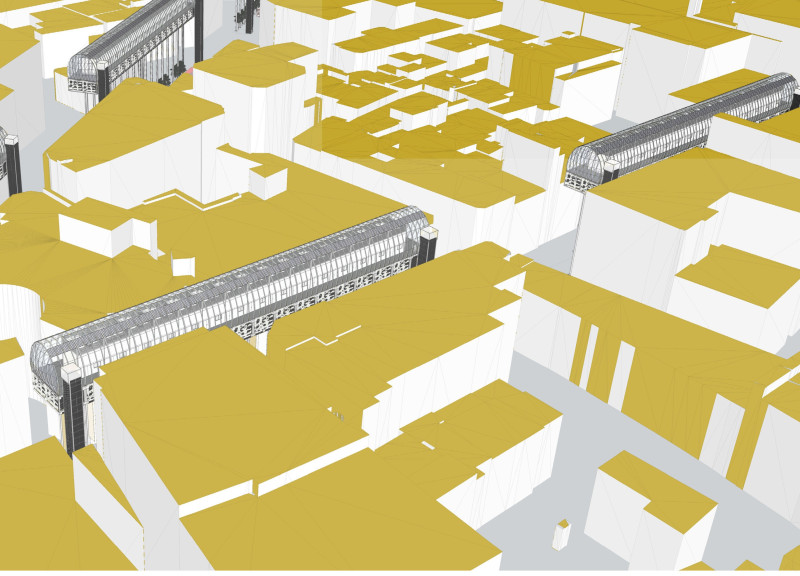5 key facts about this project
The architecture adopts an innovative layout, characterized by open spaces that facilitate movement and interaction. Interior areas are strategically arranged to maximize natural light and airflow, enhancing the overall sustainability of the project. The use of expansive glazing allows for uninterrupted views and a continuous connection to the exterior environment, blurring the line between inside and outside.
Material selection is a key aspect of this project. The design employs a range of materials, including reinforced concrete for structural integrity, glass for transparency, and timber for warmth and texture. These materials are chosen not only for their aesthetic appeal but also for their performance characteristics, contributing to energy efficiency and resilience. The building's facade incorporates a combination of these materials, creating a cohesive and visually appealing exterior.
Integrating green technology distinguishes this project from typical architectural practices. Features such as [mention any unique environmental technologies or design features, e.g., photovoltaic panels, green roofs, rainwater harvesting systems] reflect a commitment to sustainability. These systems not only serve functional purposes but also enhance the building's aesthetic, promoting the idea of architecture that supports ecological balance.
An emphasis on community engagement is also evident within the design. Shared spaces, such as [mention specific communal areas, e.g., gardens, terraces, or lounges], are designed to foster interaction among users, encouraging a sense of belonging. This approach prioritizes user experience and social connectivity, making the project relevant in contemporary urban settings.
The architectural plans demonstrate a thoughtful consideration of spatial organization. Layout diagrams reveal how distinct zones are created for privacy and communal activities, optimizing usability across various functions. Architectural sections provide insight into the relationship between different levels and spaces, illustrating how design elements interact vertically and horizontally.
Additionally, the project incorporates flexible spaces adaptable to changing needs. This versatility ensures that the building can accommodate diverse functions over time, reflecting changing user requirements and societal trends.
To gain a deeper understanding of the architectural designs and innovative solutions presented in this project, readers are encouraged to explore the detailed architectural plans and sections. These resources illustrate the thoughtful processes involved in the design, revealing how each element contributes to the overall impact of the architecture.


























